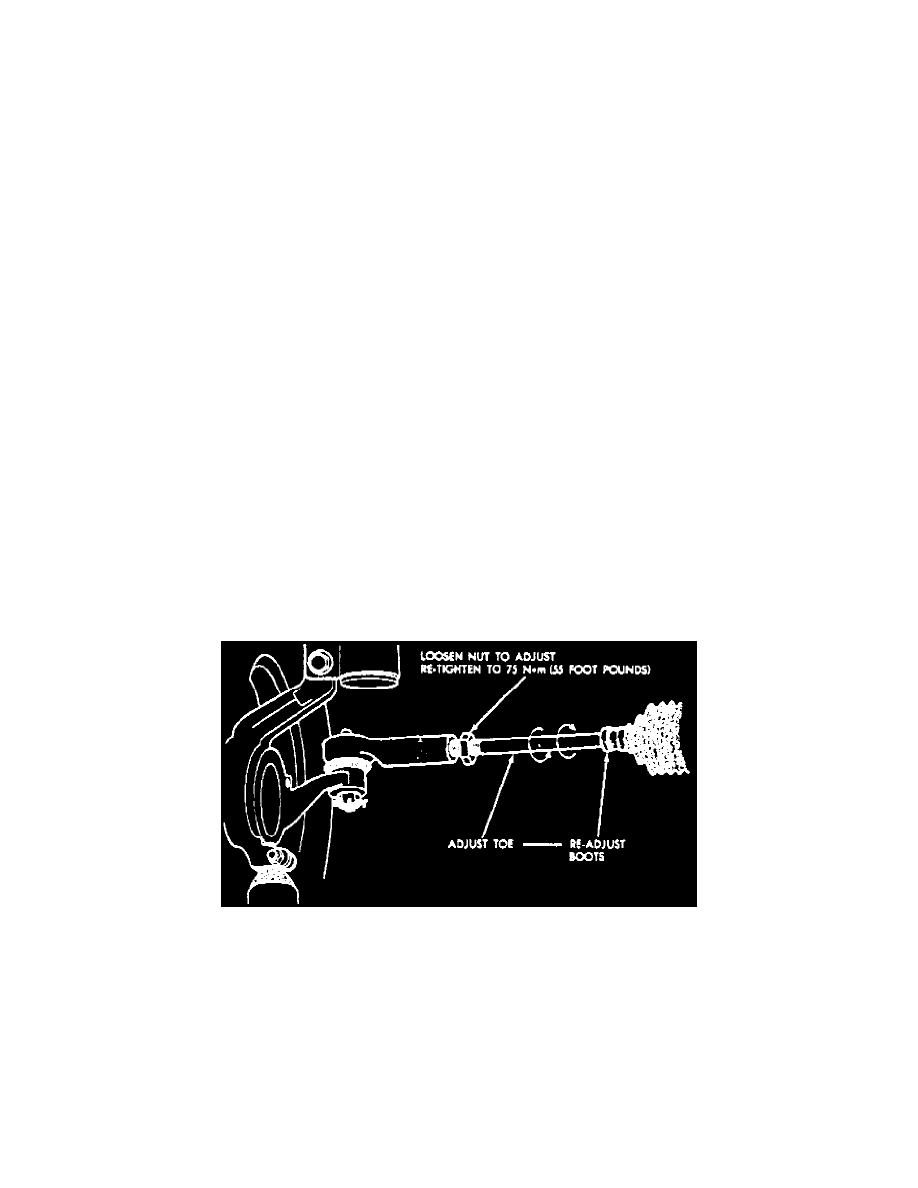Acclaim L4-153 2.5L SOHC Flex Fuel (1994)

Alignment: Service and Repair
Front Alignment
Camber
1. Perform preliminary inspection procedures outlined under "Preliminary Inspection".
See: Preliminary Inspection
2. Loosen cam and knuckle bolts.
3. Rotate cam bolt to move top of wheels in or out to specified camber.
4. Torque cam bolts to 75 ft-lbs plus an additional 1/4 turn.
Caster
The caster angle cannot be adjusted.
Preliminary Inspection
Prior to any wheel alignment inspection or correction, check the following items:
1. Ensure tires are at recommended pressure.
2. Ensure tires are of equal size and have approximately the same wear pattern.
3. Check front wheel and tire assembly for radial runout.
4. Inspect lower ball joints and steering linkage for looseness.
5. Check front and rear springs for sagging or damage.
Front suspension inspections should be performed on a level floor or alignment rack with fuel tank at capacity and vehicle free of luggage and passenger
compartment load. The vehicle should be bounced an equal number of times from the center of the bumper alternately, first from the rear, then the front,
releasing at bottom of down cycle.
Toe Adjustment
1. Perform preliminary inspection procedures outlined under "Preliminary Inspection".
See: Preliminary Inspection
2. Center steering wheel and hold in position with a suitable tool.
3. Loosen tie rod locknuts and rotate the rod.
4. Adjust toe-in to specifications. Use care not to twist steering gear rubber boots.
5. Torque tie rod locknuts to 55 ft. lbs. Adjust position of steering gear rubber boots. Remove steering wheel holding tool.
